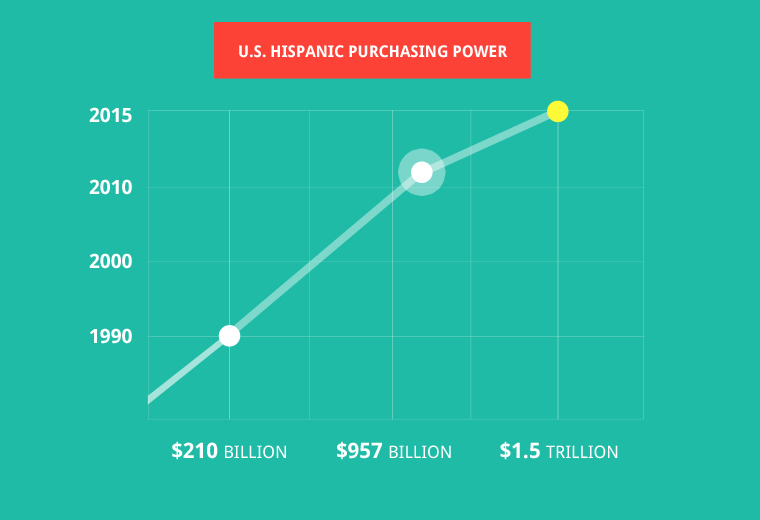ABC and Univision Tie the Knot with Creation of Fusion
Fusion, the new network conceived by a union of ABC and Univision, is described as a meeting place for English-speaking Latinos bringing together different cultures, different voices and different viewpoints. For our team at CultureSpan, Fusion represents much more than a new Latino/Hispanic media opportunity. It validates something that we’ve been working on for over 33 years - culturally integrated media for mainstream viewing. No borders, no token stereotypes.
Univision also announced that it is planning to launch its own all-news Spanish-language cable channel, Univision Noticias, later this year. In February, it began airing English closed captions during several of its primetime Spanish-language telenovelas. News Corporation is also planning to launch MundoFox, a Spanish-language entertainment channel to compete directly with Univision and NBCU’s Telemundo.
The lines between assumed corporate domains of “English-only” (EO) programming and “Spanish-only” (SO) programming have finally become as blurred as the EO and SO arguments waged by countless network and local affiliate sales reps who have strived for years to claim superiority of their programming in both audience reach and ad effectiveness.
So, what is sparking this flurry of activity? In our opinion, the idea probably wasn’t ignited so much by the marketing and ad guys, rather the impetus may have come from statisticians and demographers. Lets look at the numbers.
According to U.S. Census data, the current Hispanic population of 50.5 million is up 43% in the past decade and confirms the group as the largest minority in the country at almost 16% of total population and estimated to be 24.4% by 2050. More than half of the growth in the total U.S. population between 2000 and 2010 is attributed to the increase in the Hispanic population and Census projections attribute 60% of estimated U.S. growth to 2050 to this sector.
From another and, arguably, more compelling perspective for marketers, U.S. Hispanic purchasing power grew 356% from $210 billion in 1990 to over $957 billion in 2010 and is projected to reach $1.5 trillion by 2015 (U.S. Census, Selig Center for Economic Growth, Synovate Research).

These numbers may attest to the size and momentum of the Hispanic population, which may be justification enough to many marketers, but the statistics of language use among Hispanics illuminates TV programming language crossovers even more dramatically.
According to the U.S. Census 2009 “American Community Survey” and 2009 tabulations by the Pew Hispanic Center, 20% of the total U.S. population (age 5+) speaks a language other than English in the home and, of that number, 62% speak Spanish. Of Hispanics who speak a language other than English at home, 48% speak English “less than very well” and 52% speak English “very well.”
More specific to the universe of television households (TVHHs), Nielsen reports that the top 25 Hispanic TV markets, representing 73% of total U.S. Hispanic TVHHs, are made up of 39% “Spanish dominant” (only or mostly Spanish) and 33% “English dominant” (only or mostly English) homes. If one characterizes a “bilingual” as someone who speaks something other than “only Spanish” or “only English,” the data indicates that 76% of Hispanic TVHHs speak “mostly Spanish,” “mostly English,” or “both Spanish and English.” This definition of bilingual is problematic, however, in that it does not clearly account for a person’s degree of fluency or personal preference for the language used. That’s a topic for later discussion.
The numbers, however, would certainly indicate explosive, sustained growth in Hispanic population and spending power, and in the language characteristics that continue to shift toward “mostly English” and “only English” as second- and third-generation Hispanics continue their acculturation process within the host culture. And as Hispanics have shown that they are more likely than other ethnicities to retain ties to their heritage language, customs and attitudes, the recent decisions by programmers to recognize and target bilinguals as the largest and fastest-growing segment of the U.S. Hispanic population is not only visionary… its perfectly justified.
Are you ready to blur the cultural lines with your company, product or marketing? CultureSpan can help. All you have to do is click here and start a conversation.